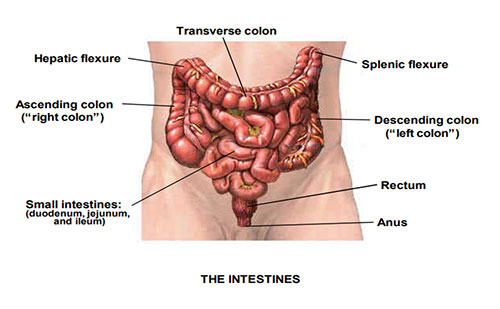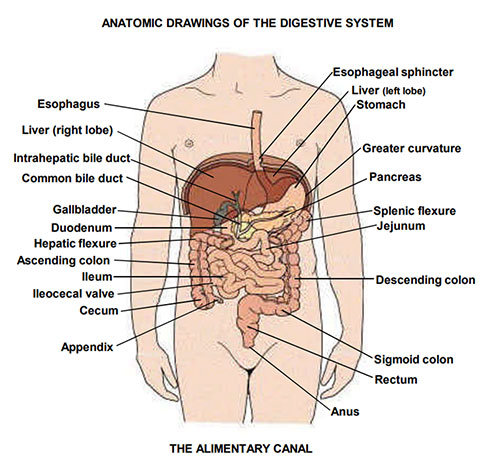Anatomy
The colon and rectum (colorectal) are essential components of the body’s digestive system. Their primary function is to absorb water and electrolytes from undigested food, form stool, and store waste until it is ready for excretion. The colon is primarily responsible for absorbing water, while the rectum serves as a temporary storage site for stool prior to elimination.
Adenocarcinomas are the most common type of tumors found in the colorectal region. Other tumor types, such as Gastrointestinal Stromal Tumors (GIST) and Neuroendocrine tumors, can also occur but are not included in this module.
The entire colon is about 5 feet (150 cm) long and is divided into five major segments: cecum, ascending colon, transverse colon, descending colon and sigmoid colon. The rectum is a separate organ.

Anatomic drawing of the intestines.
Source: Young JL Jr, Roffers SD, Ries LAG, Fritz AG, Hurlbut AA (eds). SEER Summary Staging Manual - 2000: Codes and Coding Instructions, National Cancer Institute, NIH Pub. No. No. 01-4969, Bethesda, MD, 2001.
Updated: June 24, 2025
Suggested Citation
SEER Training Modules: Anatomy. U.S. National Institutes of Health, National Cancer Institute. Cited 07 January 2026. Available from: https://training.seer.cancer.gov.





